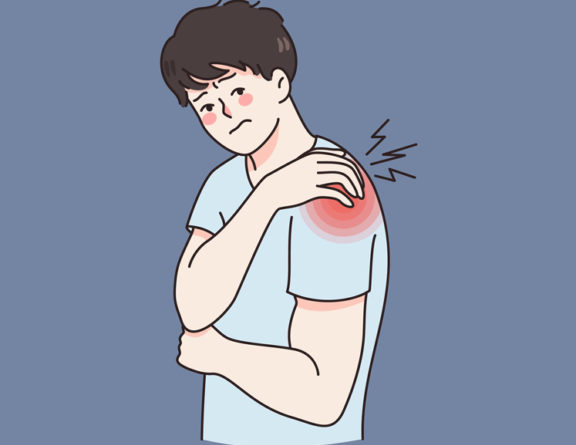Muscle Pain vs. Joint Pain: Understanding the Differences
Muscle pain and joint pain are common complaints that many individuals experience at some point in their lives. While these two types of pain may share similarities, understanding the differences between them is crucial for accurate diagnosis and appropriate treatment. In this comprehensive article, we will delve into the distinct characteristics of muscle pain and joint pain, exploring their causes, symptoms, diagnosis, and treatment options. By gaining insight into these nuances, readers will be better equipped to differentiate between muscle pain and joint pain, ultimately enhancing their ability to manage and alleviate discomfort effectively.
Introduction to Muscle Pain and Joint Pain
Have you ever woken up feeling like you did a marathon in your sleep? Muscle pain and joint pain can be a real pain in the back – or anywhere else for that matter. Understanding the differences between these two types of pain can help you pinpoint the source of your discomfort and take the right steps towards feeling better.
Defining Muscle Pain and Joint Pain
Muscle pain, also known as myalgia, refers to discomfort or soreness in the muscles that can be caused by overuse, tension, or injury. On the other hand, joint pain, or arthralgia, is characterized by pain, stiffness, or swelling in the joints, which can be triggered by conditions like arthritis or injury.
Importance of Understanding the Differences
Distinguishing between muscle pain and joint pain is crucial for effective treatment and management. Knowing whether your ache is in the muscles or the joints can guide you towards the right remedies and therapies, helping you get back to your usual sprightly self in no time.
Causes and Symptoms of Muscle Pain
Common Causes of Muscle Pain
Muscle pain can sneak up on you after a tough workout, due to poor posture, or as a result of stress and tension. In more serious cases, muscle pain can be a sign of conditions like fibromyalgia or muscle strains.
Symptoms Associated with Muscle Pain
Muscle pain often feels like a dull ache, tenderness, or stiffness in specific areas of the body. You might also experience muscle spasms, swelling, or reduced range of motion in the affected muscles.
Causes and Symptoms of Joint Pain
Common Causes of Joint Pain
Joint pain can stem from various sources, including arthritis, bursitis, injury, or even inflammation. It can impact any joint in the body, from your knees and hips to your fingers and wrists.
Symptoms Associated with Joint Pain
Joint pain is typically characterized by discomfort, swelling, stiffness, and reduced mobility in the affected joint. You may also notice warmth or redness around the joint, depending on the underlying cause.
Diagnosis and Treatment of Muscle Pain
Diagnostic Methods for Muscle Pain
To get to the root of your muscle pain, healthcare providers may perform physical exams, imaging tests like X-rays or MRIs, and even blood tests to rule out certain conditions.
Treatment Options for Muscle Pain
Treatment for muscle pain can involve rest, ice or heat therapy, gentle stretching exercises, over-the-counter pain relievers, and in some cases, physical therapy to strengthen and rehabilitate the affected muscles. Remember, giving your muscles the TLC they need can have you back in action in no time!
Diagnosis and Treatment of Joint Pain
Diagnostic Methods for Joint Pain
When it comes to diagnosing joint pain, healthcare providers may conduct a physical examination to assess the affected area’s range of motion, strength, and tenderness. Additionally, imaging tests like X-rays, MRIs, or ultrasound scans can help identify underlying causes such as arthritis or injuries.
Treatment Options for Joint Pain
Treatment for joint pain can vary depending on the cause and severity. Common approaches include rest, physical therapy, medications like anti-inflammatories, corticosteroid injections, and in severe cases, surgery. Lifestyle modifications such as weight management, exercise, and joint protection strategies can also help manage joint pain effectively.
Key Differences Between Muscle Pain and Joint Pain
Muscle pain usually stems from overuse, tension, or injury to the muscles themselves, resulting in localized soreness or discomfort. In contrast, joint pain originates from the structures surrounding the joint, such as ligaments, tendons, or the joint itself, often manifesting as stiffness, swelling, or limited mobility.
Prevention Strategies for Muscle and Joint Pain
To prevent muscle and joint pain, it’s essential to maintain a healthy lifestyle with regular exercise, proper posture, and adequate rest. Warm-up and cool-down exercises before and after physical activities can help prevent muscle strains, while maintaining a balanced diet rich in nutrients and staying hydrated can support joint health.
When to Seek Medical Attention
If muscle or joint pain persists despite home remedies or worsens over time, it’s crucial to seek medical attention. Symptoms like swelling, redness, severe pain, or difficulty bearing weight warrant a visit to a healthcare professional for further evaluation and appropriate treatment to prevent potential complications.In conclusion, distinguishing between pain and joint pain is essential for promoting overall musculoskeletal health. By recognizing the unique features of each type of pain and implementing targeted prevention strategies, individuals can reduce the likelihood of experiencing discomfort and improve their quality of life. Whether seeking medical attention for persistent symptoms or adopting lifestyle changes to prevent future issues, a thorough understanding of muscle and joint pain empowers individuals to take proactive steps towards optimal well-being.




